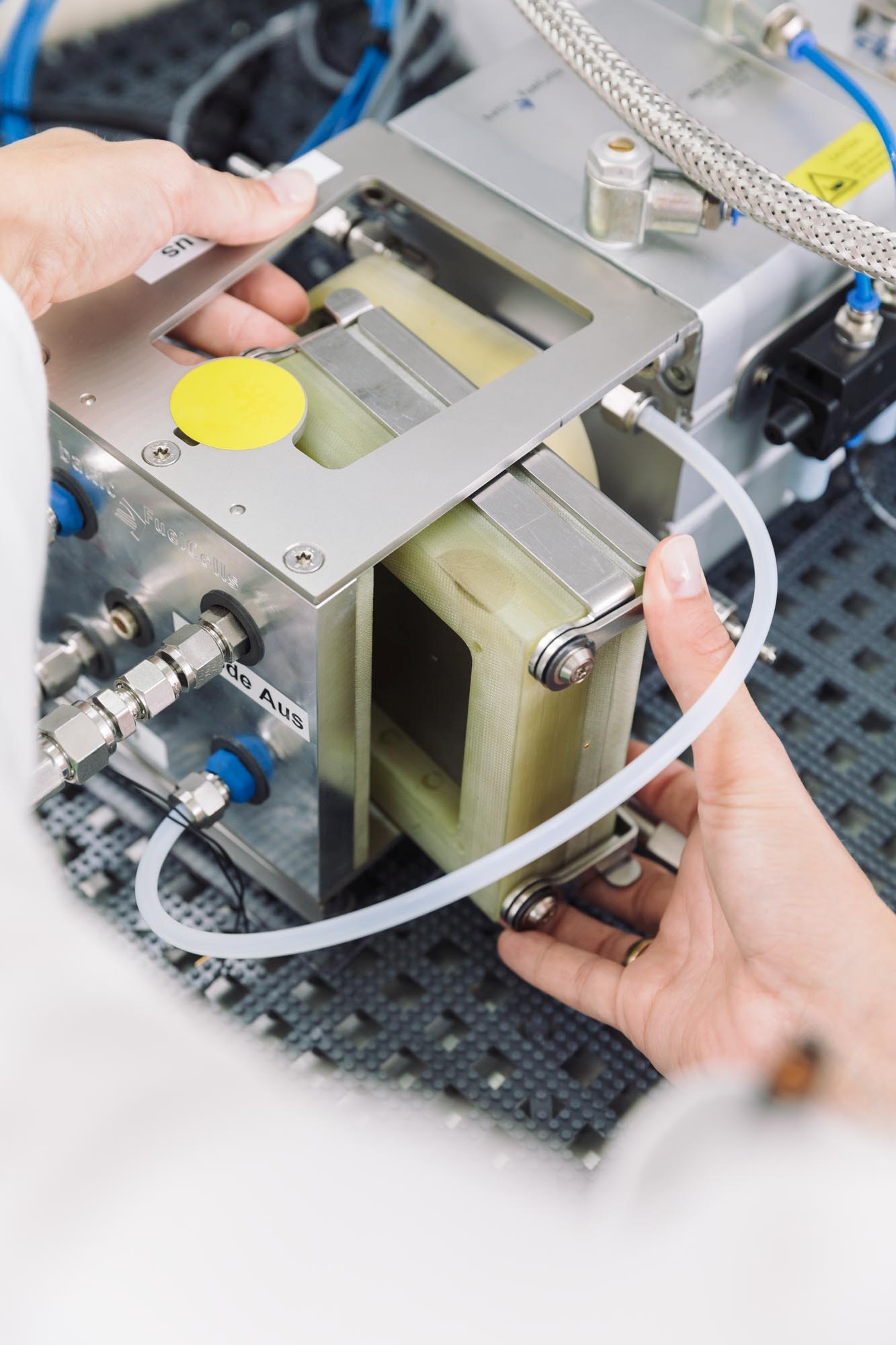Dr. Kerstin Witte-Bodnar is working at the Fraunhofer Institute for Microstructure of Materials and Systems IMWS on a key aspect for the establishment of a hydrogen economy. She and her team are investigating how materials in electrolysers and fuel cells age and which defects can occur during operation. The position was created as part of a tandem program that focuses on the interfaces between science and industry and also involves working at Anhalt University of Applied Sciences.

The tandem program of the Center of Advanced Scientific Education (CASE) aims to build bridges between science and practice. It offers scientists the opportunity to gain valuable practical experience in cooperation with regional companies or non-university research institutions such as Fraunhofer, while at the same time gaining teaching experience at the university. Dr. Kerstin Witte-Bodnar has held such a tandem position at Anhalt University of Applied Sciences and the Fraunhofer IMWS since 2024.
She studied physics at the University of Rostock, where she graduated in 2010 and completed her dissertation in 2015. With a specialist focus on materials development, she then worked as a research assistant at the University of Rostock, where she also held positions at micromod Partikeltechnologie GmbH and the Leibniz Institute for Plasma Science and Technology (INP). She has been working at the Fraunhofer IMWS in Halle (Saale) since 2021.
Here, she is dedicated to material diagnostics for hydrogen technologies, a key area for the future energy supply. “Our research helps to increase the service life and efficiency of electrolysers and fuel cells, which is of great importance for regional industry,” explains Dr. Witte-Bodnar. Her findings flow directly into teaching at Anhalt University of Applied Sciences and support local industry, particularly companies in the central German chemical triangle, in optimizing and upscaling their processes.
Her current research questions include, for example, the cross-scale, microstructural characterization and evaluation of active materials and catalyst-coated membranes. The aim is to identify relevant structures and degradation mechanisms, whereby she and her team are focusing in particular on changes to the three-dimensional membrane structure during operation. The physicist is also contributing her expertise in microstructure analysis to the “FRHY: Reference factory for high-rate electrolyser production” project.
The tandem format is also intended to ensure that the generational change in university professorships in Saxony-Anhalt succeeds with qualified personnel. Around a third of these positions will need to be filled by 2027, particularly in the STEM subjects. In order to take on a professorship at a university of applied sciences (HAW), applicants must demonstrate both academic qualifications and professional experience in business. The Tandem format, which is funded by the Federal Ministry of Education and Research's (BMBF) “FH-Personal” program, prepares applicants for this.
“The tandem programme enables me to prepare intensively for a professorship and at the same time create synergies between research, teaching and regional business,” emphasizes Dr. Witte-Bodnar.
(13.12.2024)